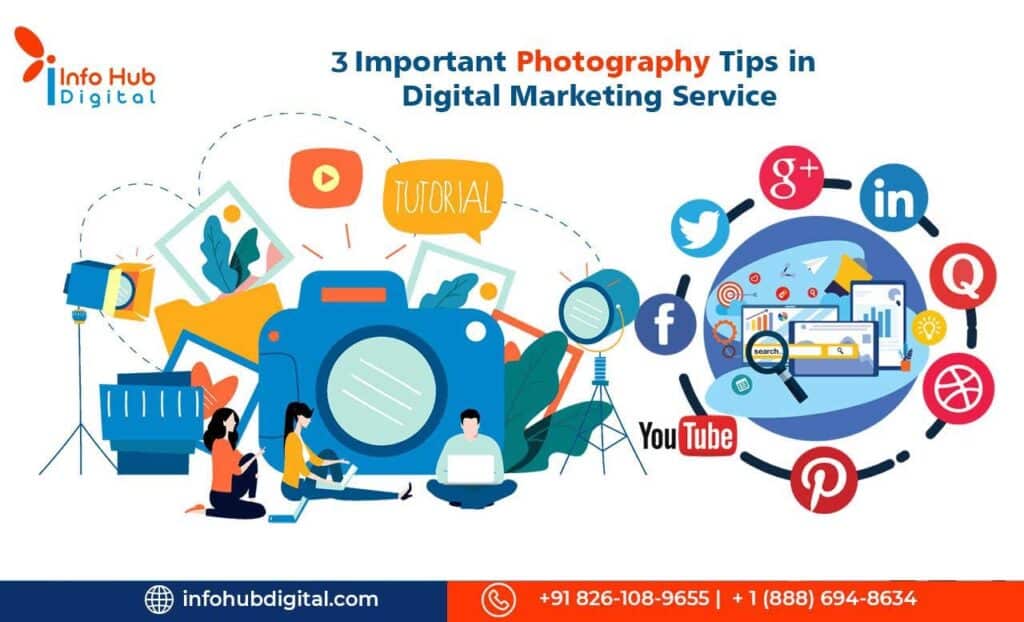Whether you’re looking to establish a career in photography business, a strong digital marketing strategy will help you in the process.
Here’s 3 Important Photography Marketing Tips for Photographers in Digital Marketing Services
Table of Contents
1. Use descriptive names for your images and post titles that are Google-friendly
As a part of your SEO strategy, including keywords for search engines help you understand the quality of the post.
2. Identify Your Target Market
A good place to start promoting your photographs is to determine your specialty. Understanding your target market will create ideas to appeal to a certain clientele
Think about big enterprises, little and local firms, and even individual customers. Additionally, you may divide your audience into more precise categories based on:
- Location
- Income
- Specialization
- Interests
Because it depends entirely on your objectives, skill set, and experience, there is no one way to categorise your specialisation. Utilizing online tools like Google Analytics, Instagram, and Facebook Business Page Insights may make it easier to identify and categorise your target market.
3. Improve the SEO of your website
In photography marketing, search engine optimization (SEO), which directly affects website traffic, is widely used. Simply said, prospective clients won’t be able to find you or your business online if your photographic portfolio, website, or blog is not optimised for or searchable. Here are some pointers for improving the SEO of your writing.
Pick relevant keywords: Take into account the phrases and words people use to search for you on Google. Simply put, your work will be more accessible if the content of your website contains the appropriate keywords. You can select the best keywords for your website by using tools like Google Keyword Planner, Ahrefs, Semrush, and Moz.
You should incorporate the right keywords into your website pages after selecting them as part of the optimization process. The H1 heading, body text, meta description, URL, and all other pertinent areas of your content must all contain the main keyword. If the proper keywords aren’t used, Google won’t be able to understand the content of your page.
Picture compression: Don’t forget to use keywords in the descriptions and alt-tags for all of your images. The size of your photographs has a direct impact on how quickly your website loads, so take care to compress all visual assets. As a general rule, use images that are under 500KB in size. If you need a free photo compression tool, look into Caesium. If you’re looking for an application that can batch-compress photos, you might also want to give Duplichecker’s or File Optimizer’s image compressors a shot.
Link building: Obtaining backlinks from other sources is a key ranking factor. Google examines millions of websites every day in order to evaluate each link, thus the more backlinks your website acquires, the higher it will rank on Google.
Domain authority: is yet another important aspect to consider (DA). Collaboration with local businesses, bloggers, influencers, and other creatives may increase your domain authority. Additionally, you can create winning alliances during the process.
Use Social Media Marketing: Since social media places a strong emphasis on visual material, it is the perfect medium for promoting photography and is regarded as one of the most effective marketing methods. Making an investment in social media marketing is critical because expanding and diversifying your customers require having an online presence. You may use your social media platforms as a portfolio by continually sharing your most recent work and encourage engagement from your followers. According to a Databox survey, building brand recognition is the main objective for SMBs like photography studios. It can also be helpful to leave comments on other people’s posts and maintain contact with your employees, potential clients, and business partners.
Using Instagram Stories and Instagram Live could be a helpful tactic for growing your following and keeping your brand in the public eye. This content is transient, therefore you are free to use it as a special means of informing your customers about upgrades. If you establish loyal relationships with them on your social media platforms, your audience is more likely to take into account you for their upcoming project.
Of course, constantly sharing new photos could be time-consuming and tiresome. Fortunately, you may organise and schedule your postings using the tools that are accessible. Create your content using social media templates and post it to your social networks using social media management tools like Buffer or PIXBUF.
Conclusion :
In conclusion, as a photographer, it is crucial to have a strong digital marketing strategy in place to establish a successful career in the industry. By following the above-mentioned tips, you can enhance your website’s SEO, identify your target market, and use social media to promote your work. As a Professional Digital Marketing Services Provider in Pune, Info Hub Digital can assist you in developing a comprehensive digital marketing plan that will help you grow your photography business and reach new audiences. Don’t hesitate to contact us to learn more about how we can assist you in achieving your goals.







